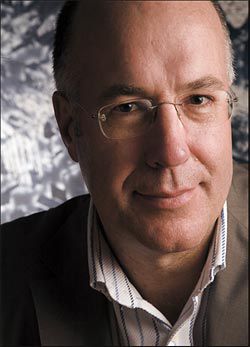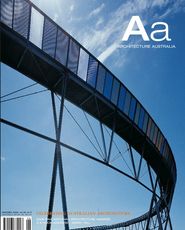POLICY MAKERS OR OBJECT MAKERS?

What role can and should architects play in the development and debate about our growing cities? The overall theme of the current Venice Architecture Biennale, Cities. Architecture and Society, which is reviewed in this edition, places this question in contrasting lights.
The principal exhibition by Biennale director Richard Burdett (Professor of Urban Planning, University of London) presents, in persuasive detail, the “problem” of the contemporary city, with the current urban condition analyzed through an array of statistics, maps, models and videos. The short-form story of the exhibition is this: the transformation of agrarian economies into a globalized industrial economy, particularly in Asia and South America, is resulting in a massive population influx in cities. Cities are the place of opportunity for the future – take Shanghai as just one intense example. The twenty-first century is proclaimed as the century of an urbanized world. The questions to be addressed in relation to this “problem” were summarized as follows: how do we generate strategies for density, especially in housing; for effective public transport and infrastructure for stable governance; for making cities sustainable; and for creating new ideas for a public realm. Not rocket science perhaps, but the sense of a global inertia with regard to the condition of the city was palpable.
The architect’s role within this detailed exposition of the urban condition was less clear, even uncertain and paradoxical, trapped somewhere between facilitation and icon production. How does this global phenomenon relate to architects working in Australian cities? We have none of the dramatic momentum of Shanghai, but the urban issues are the same: shrinking rural towns, major infrastructure investment needs, the slow conversion of suburbia into more sustainable densities, and the revitalization of our city centres. These themes are explored in the highly successful exhibition at the Australian Pavilion – Micro Macro City – which links the macro condition of our local urban world to the micro interventions of various architectural projects.
Within the local and global exhibits of the biennale, two ways of contemplating the role architects play in our cities seemed to emerge. The first of these encourages, even demands, that architects act as players in the big picture; that they influence the systems which make up the complex apparatus of the city – the politics, the legislation, the frameworks, the economic imperatives. This approach carries with it an exhortation for architects to step outside of their discipline, to create a design-led influence across other disciplines. For those who subscribe to this approach, architects are stereotypically seen as object makers, concerned primarily with the aesthetic qualities of the city – designing the packaging at the end of the process line. This approach also seems to suggest that the big picture is all that it takes to make a great city – get the policy setting right, and hey presto.
The alternative view is to regard the big picture as being created out of many small ones – a great city is made one building at a time. In this view each architectural concept is connected to an idea or some particular research, or to an analysis of its local condition. It’s an approach that champions the specific and the real over the general and abstract. Better to create thoughtful and intelligent buildings and landscapes that contradict the “correct” idea of the framework than those that merely meet, without passion, a baseline objective. From this perspective, the big picture of the city systems is able to define the city, but is in no way able to make it.
The creative tension that these contrasting approaches generate – a tension that cuts right through the architecture and urban planning disciplines – is a very real dilemma. Do we make cities great by strategic or regulatory frameworks alone? Or can we make our cities great through extraordinary architecture which obviates such a framework? Of course, the truth lies somewhere in between – but history shows us that it is architecture that makes a city truly great.
On the horns of this dilemma there is a clear way forward to make Australian cities better.
The aficionados of the big picture must continue to recognize and promote the value of design and the value of intelligent and extraordinary architecture in contributing to the future success of our cities. And architects concerned with individual buildings need to continue to research and understand the systemic values that make our cities work, and how to add to this aggregation. In the end, great cities are designed, not planned – and the difference between these approaches is architecture.
I’d be interested to receive any thoughts on these issues via president@raia.com.au.
CAREY LYONNATIONAL PRESIDENT RAIA















